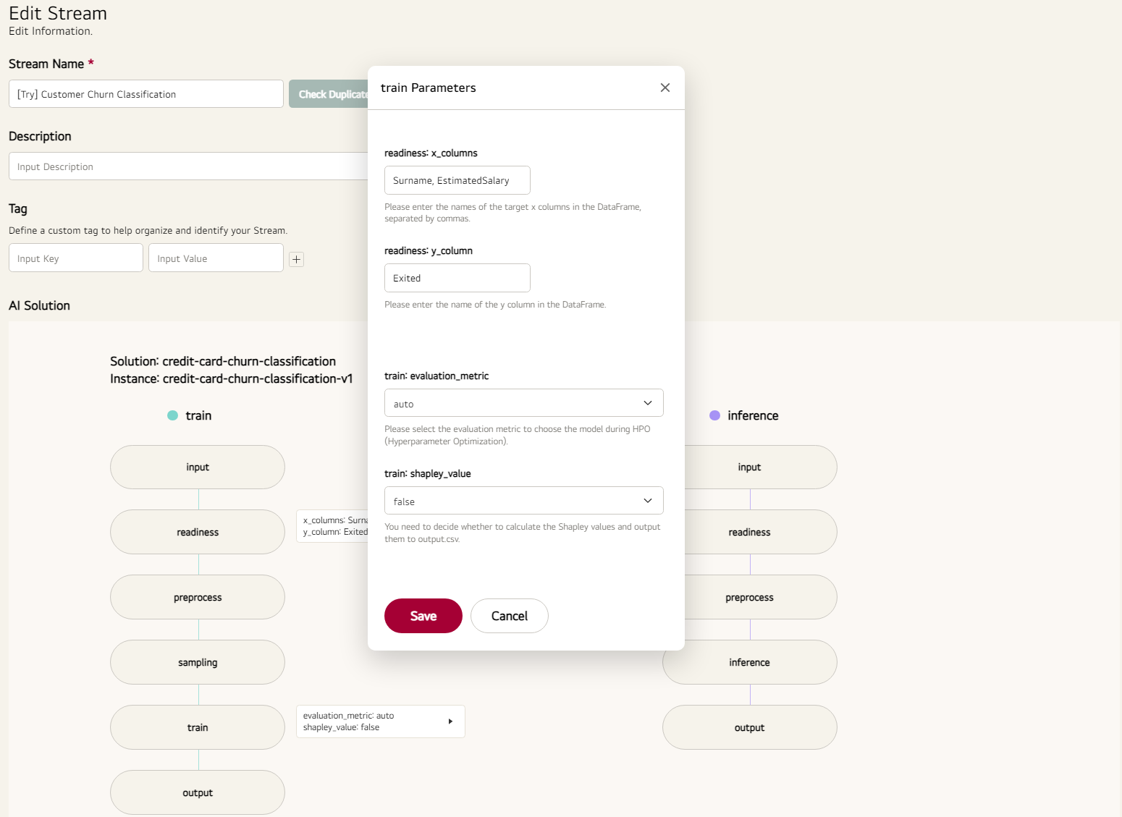Tabular Data Solution Service
In the AI Solution tutorial, we will experience running a service to classify credit card customer churn using an AI Solution created based on Tabular Classification/Regression Contents.
Service Environment Configuration
Download the data used in the tutorial.
Download Link: Credit Card Churn Data
| RowNumber | CustomerId | Surname | CreditScore | Geography | Gender | Age | Tenure | Balance | NumOfProducts | HasCrCard | IsActiveMember | EstimatedSalary | Exited | |
|---|---|---|---|---|---|---|---|---|---|---|---|---|---|---|
| 0 | 1 | 15634602 | Hargrave | 619 | France | Female | 42 | 2 | 0 | 1 | 1 | 1 | 101348.9 | 1 |
| 1 | 2 | 15647311 | Hill | 608 | Spain | Female | 41 | 1 | 83807.86 | 1 | 0 | 1 | 112542.6 | 0 |
| 2 | 3 | 15619304 | Onio | 502 | France | Female | 42 | 8 | 159660.8 | 3 | 1 | 0 | 113931.6 | 1 |
| 3 | 4 | 15701354 | Boni | 699 | France | Female | 39 | 1 | 0 | 2 | 0 | 0 | 93826.63 | 0 |
| 4 | 5 | 15737888 | Mitchell | 850 | Spain | Female | 43 | 2 | 125510.8 | 1 | 1 | 1 | 79084.1 | 0 |
- Data Variable Specifications
- Customer ID: Unique identifier for each customer.
- Surname: Customer's last name.
- Credit Score: Customer’s credit score.
- Geography: Country where the customer resides (France, Spain, or Germany).
- Gender: Customer's gender.
- Age: Customer's age.
- Tenure: Number of years the customer has been with the bank.
- Balance: Customer's account balance.
- NumOfProducts: Number of bank products the customer uses (e.g., savings account, credit card).
- HasCrCard: Whether the customer has a credit card (1 = Yes, 0 = No).
- IsActiveMember: Whether the customer is an active member (1 = Yes, 0 = No).
- EstimatedSalary: Estimated salary of the customer.
- Exited: Whether the customer has churned (1 = Yes, 0 = No).
From the specifications, the variable we want to predict (dependent variable) is "Exited", and the variables to be used for prediction (independent variables) are all except the dependent variable "Exited" and the simple ID value "CustomerId".
Windows PC
The following specifications are recommended for a PC with Edge App installed to operate the Tabular Solution:
- CPU: i5
- Memory: 8GB
- OS: Windows 10
AI Solution Operation
Dataset Creation
On Edge Conductor, go to the dataset creation menu, select the Solution as credit-card-churn-classification, and choose the Data Source as Local.
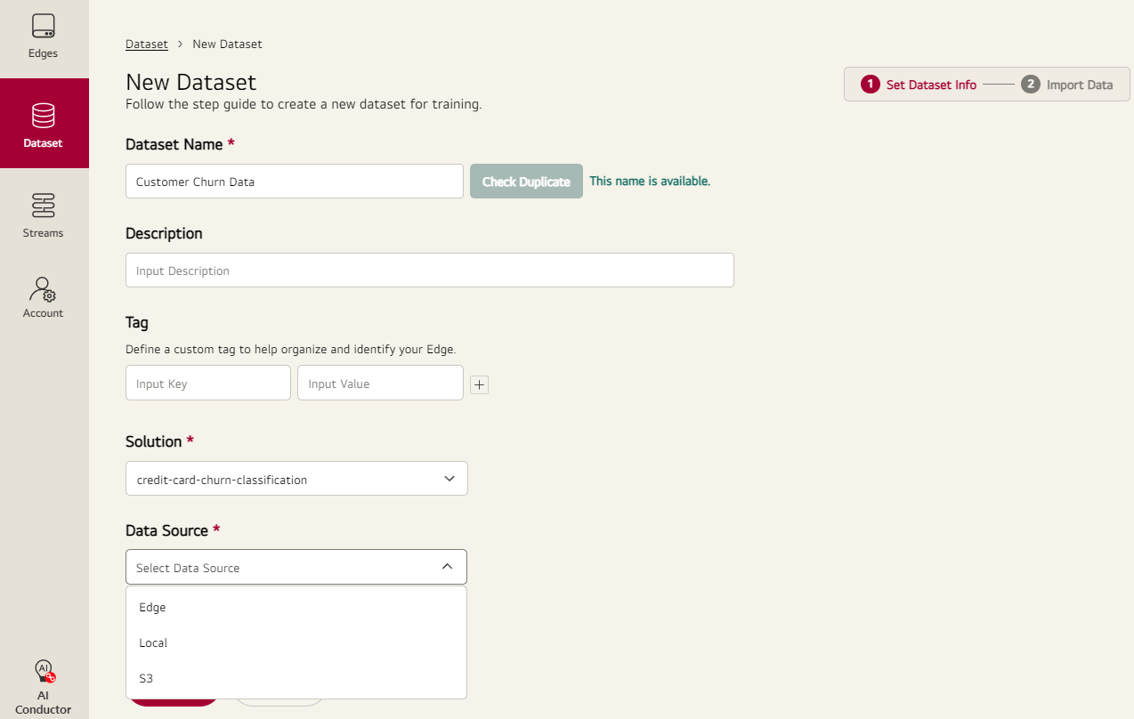
Compress the training CSV file from the tutorial data into a zip file and import it to create the dataset.
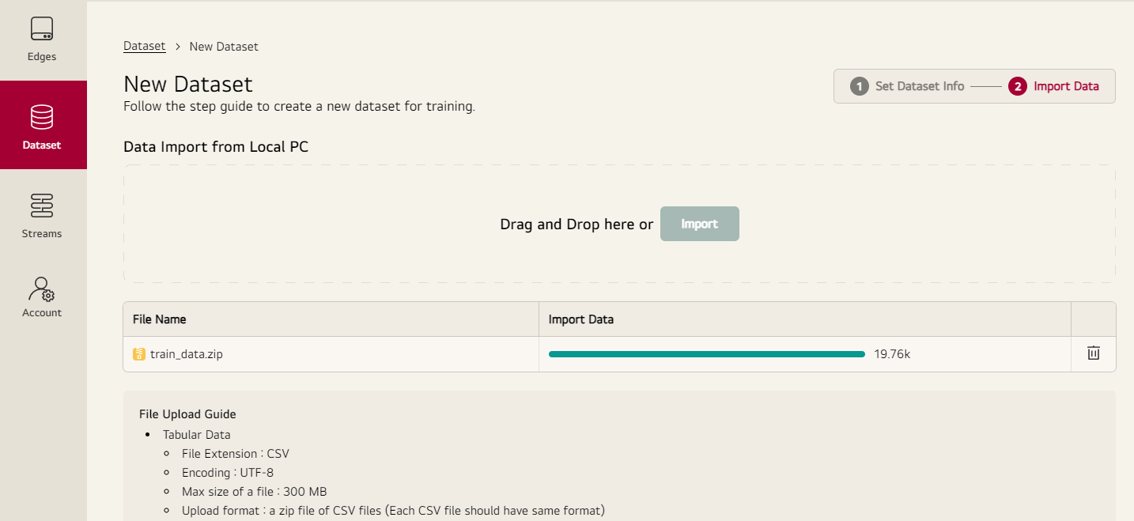
Click on the data in the created dataset to ensure it has been generated correctly.
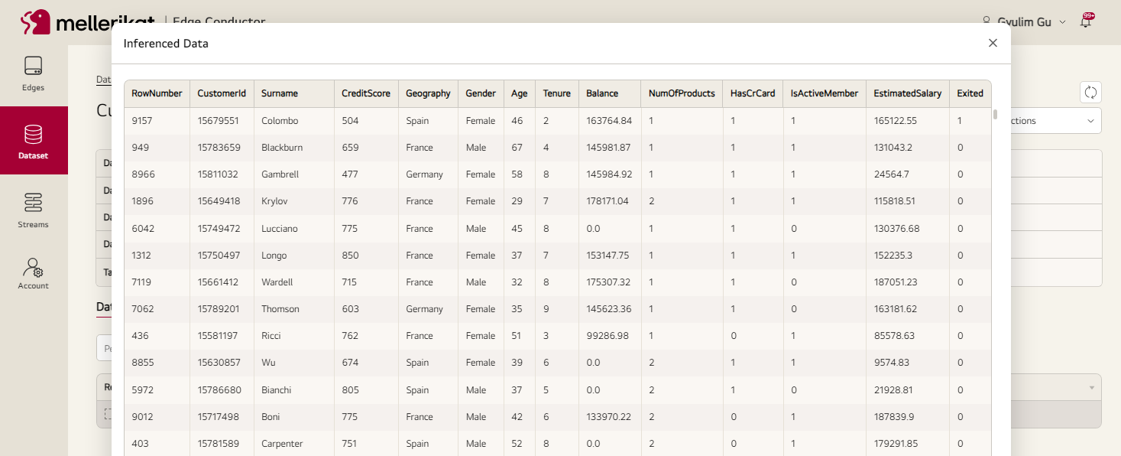
Refer to the Dataset Manual for detailed instructions.
Model Training and Deployment
On the Streams menu, click the training button for Customer Churn Classification, select the created dataset, and request training.
Once requested, the dataset's data is transferred to the cloud's S3, and AI Conductor pulls the data to run the training pipeline and create the model.
When training is complete and the model is ready, AI Conductor sends the model to Edge Conductor, making it ready for deployment to the Edge App.
Click the deploy button and deploy the model to the Edge App to perform the service.
Once deployed, the Edge App switches to Disconnected status, downloads the inference Docker, and switches to Connected status once the setup is complete.

Inference
Copy the tutorial data to the DataInputPath being monitored by the Edge App to perform inference.
Inference results are stored in DataOutputPath and also sent to Edge Conductor.
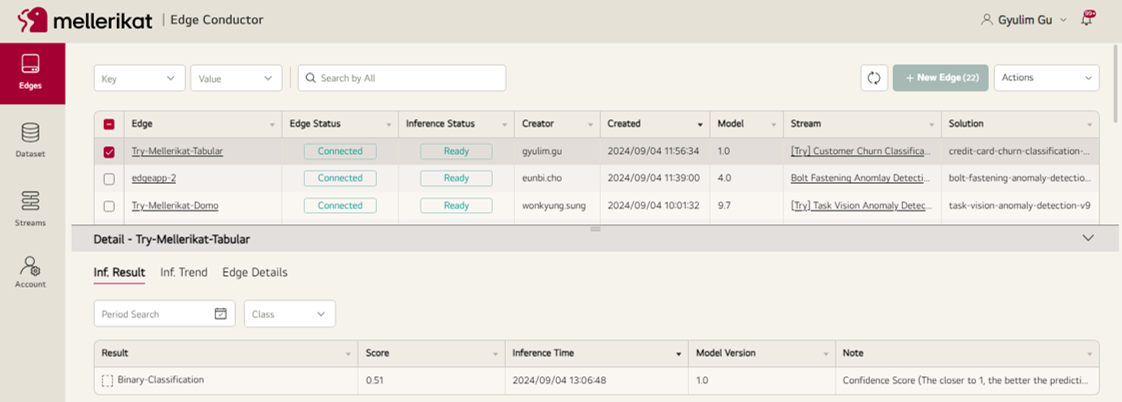
You can operate the service by sending the data stored in DataOutputPath to a database or a dashboard application to utilize the AI model inference results.
Inference results can also be viewed on Edge Conductor.
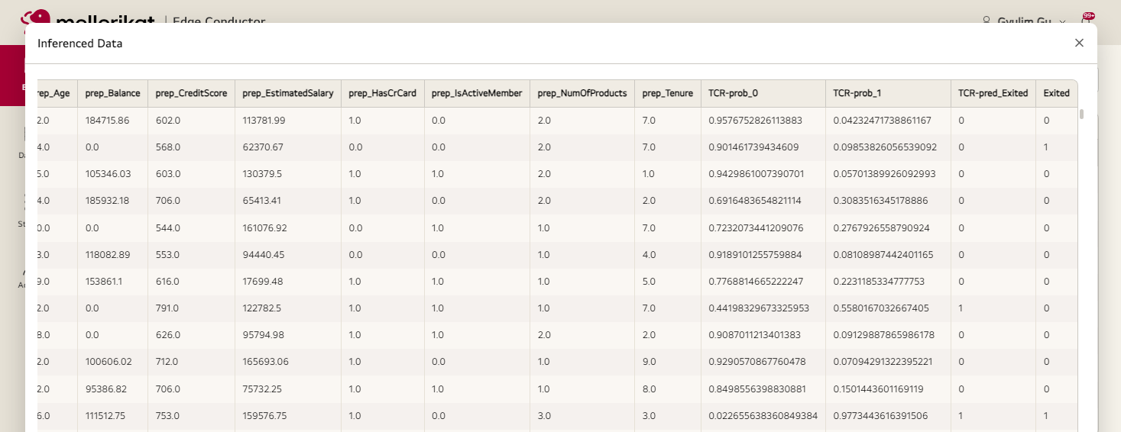
Parameter Adjustment
Parameters can be adjusted in Edit Stream. For example, features can be added or removed in x_columns to improve AI model performance, followed by training and deployment.
